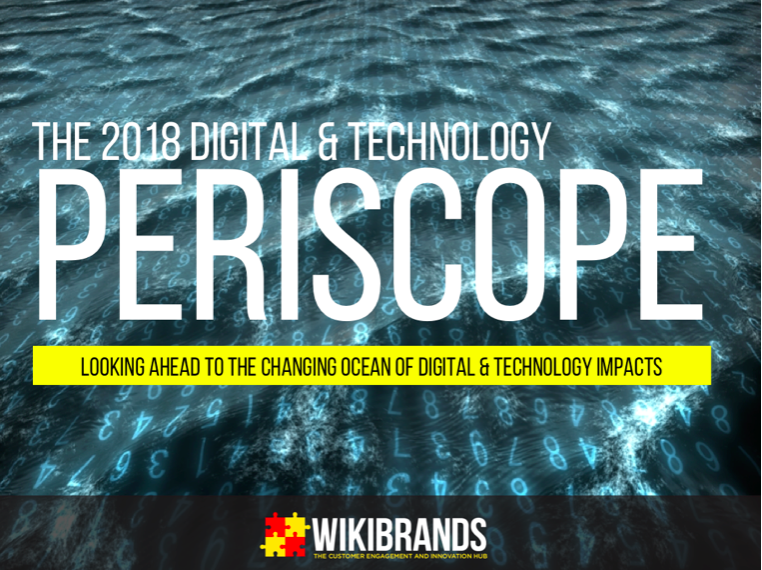
May 18, 2018 | Culture & Leadership, Emerging Trends, Futureproofing & Disruption, New Business Models & Strategies, Social Innovation & Transforming Better Worlds, Startups & Accelerators, Technology & New Media

As a companion study to our customer-facing “Customer Zeitgeist”, we’re asking digital executives, IT leaders, transformationists and strategic people dealing with the connected economy, all about the emerging technologies and the changing digital world.
Let’s go deeper than just naming trends, let’s put some weight and timing to them and figure out what’s really happening now. We’re calling the study “The 2018 Digital and Technology Periscope” and it follows up on a Digital Transformation Study we fielded last year.
We have got so many curiosities, we have divided the survey into two parts:
Part 1: Current digital practices and behaviours: https://www.surveymonkey.com/r/digitalperiscope2a
Part 2: Future trends and predictions: https://www.surveymonkey.com/r/digitalperiscope2b
Some of our 40+ questions include (the full question set in the slideshare deck below):
- the most disrupted industries by technology
- the biggest organizational winners and losers
- top macro and meta technology trends
- biggest elements for technology leadership
- top opportunities and impasses for digital transformation
- biggest bets and top ethical considerations for a technology future
- understanding on the weights and mainstream timing for anticipated next wave of technology
- where will organizations be investing the most
- what opinions and biases people have on how to approach technology implementations
- some fun questions on favourite tech-realzted Tv/Netflix shows and best tech advice you’d give the 19 year old you
- and what’s changed from previous study’s reports
Our survey will open up in early 2018 and closeout in June 2018. As always, we will offer a range of benefits to respondents:
- first crack at the topline report
- ability to be credited for comments in our final report and presentations
- a chance to win digital and technology-relevant recent books (see below)
- an opportunity to collaborate and work with us as a technology futures guide
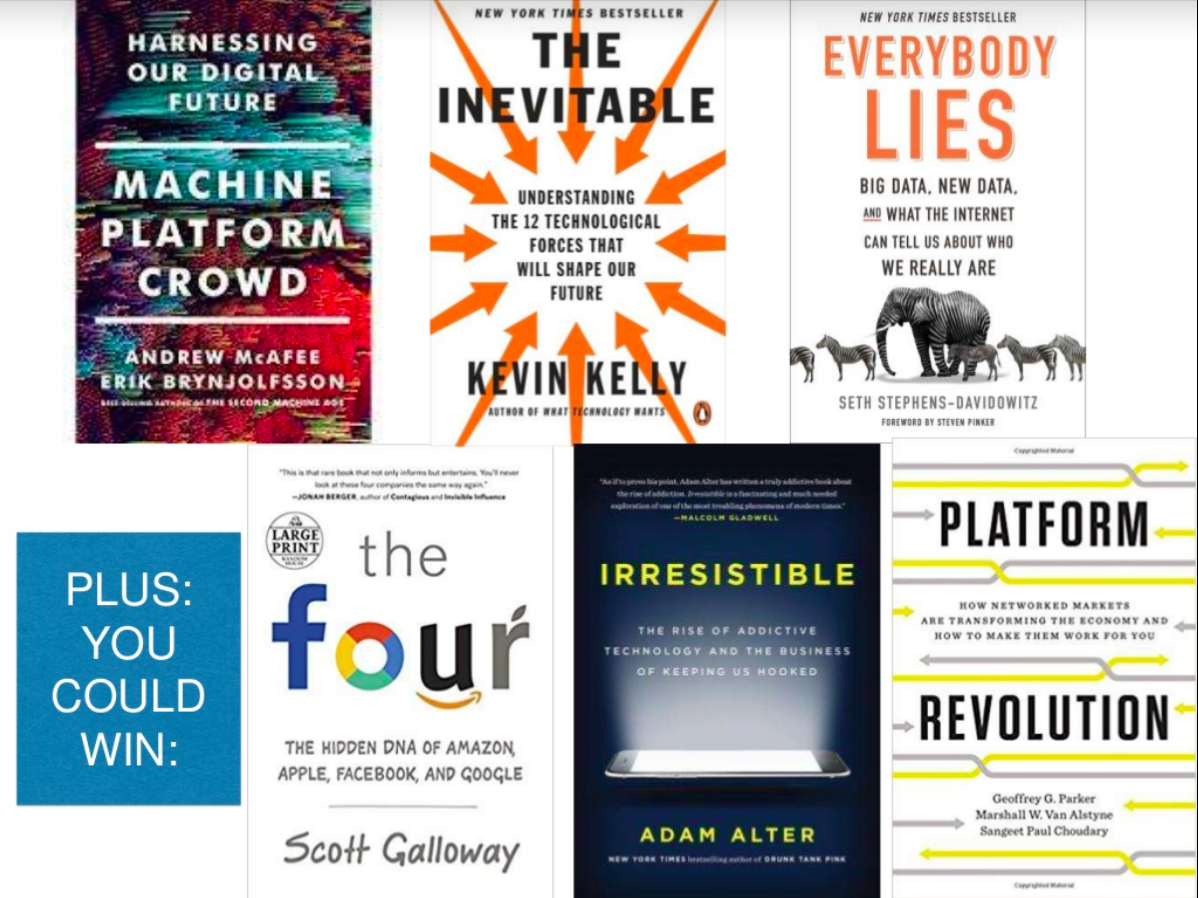
Before launching, please let us know if you’d like to here:
- be a respondent to the survey
- invite us into your company to present the results
- express your interest in being part of our Periscope technology guild
- work with us to produce industry-specific content or executive report
Once again here are the two surveys:
Part 1: Current digital practices and behaviours (estimated time to complete 14 minutes):
Part 2: Future trends and predictions (estimated time to complete 18 minutes):
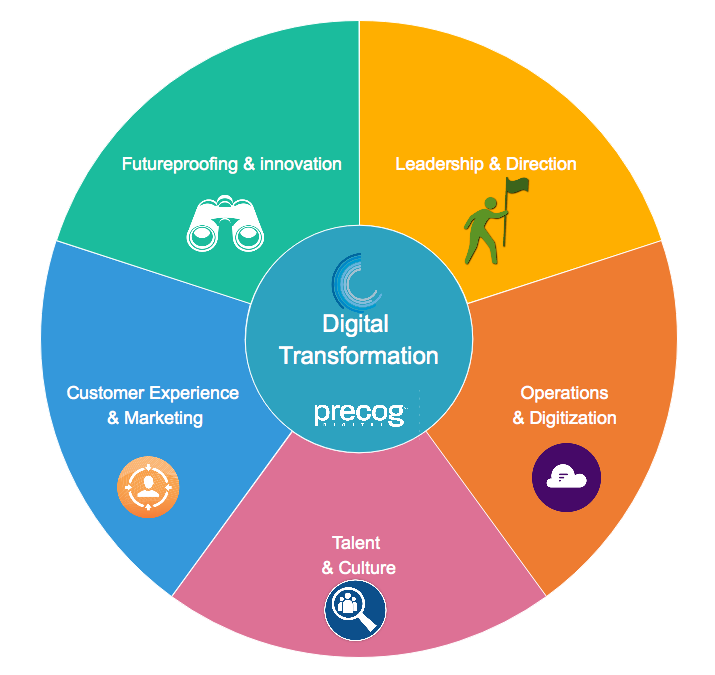
Aug 12, 2016 | Branded Content and Social Business, Connecting with Customers, Culture & Leadership, Customer Experience & Insights, Emerging Trends, Futureproofing & Disruption, Leading Winning Business, Marketing & Brand Engagement, New Business Models & Strategies, Product & Service Innovation, Startups & Accelerators, Technology & New Media, The Crowd, Sharing and On-Demand Economy, WHAT'S NEW
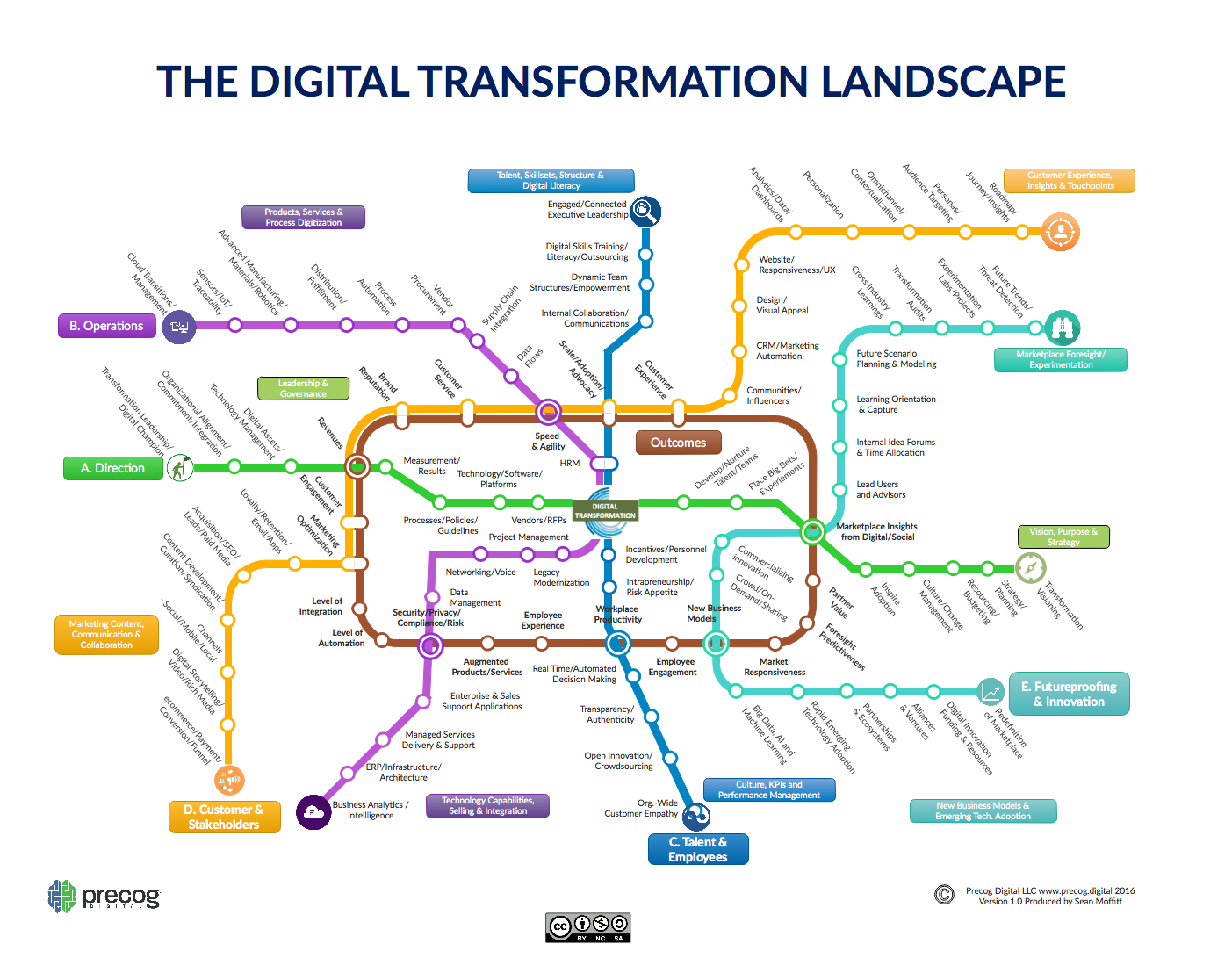
Having looked at more than a hundred digital transformation models, one of the common frustraters I find is that each model seems very tribal.
CIOs author transformation models focused on technology and the inherent issues of integration, platforms, security, features and compliance with passing reference to end users and business leadership.
CMOs author transformation models focused on acquiring and retaining customers talking up customer experience, new media, content/inbound marketing, tracking performance and revenue acquisition with passing reference to issues concerning the organizational change, integration, risk management and technology architecture and execution.
And yet another party – CEOs/COOs author transformation models focused on how to generate competitive positionings, cost and workplace efficiencies, strategic alignment, culture change and organizational speed and delivery with passing reference to functional-specific issues related to technology, marketing, HR, sales and finance.
All of these are incomplete. True digital transformation embeds itself deeply in organizations and changes the culture, behaviours, strategies and tactics of the business, customer-facing, talent leading and technology managing facets of the business.
We’ve attempted to build a more holistic model – including the key 5 transformation segments, 10 sub-segments, 20 expected outcomes and 90 sub-areas of transformation concern. Let us know what you think and if we have missed anything.
Attached is a higher definition PDF to search all the intricacies of our new model digitaltransformationlandscapeprecog
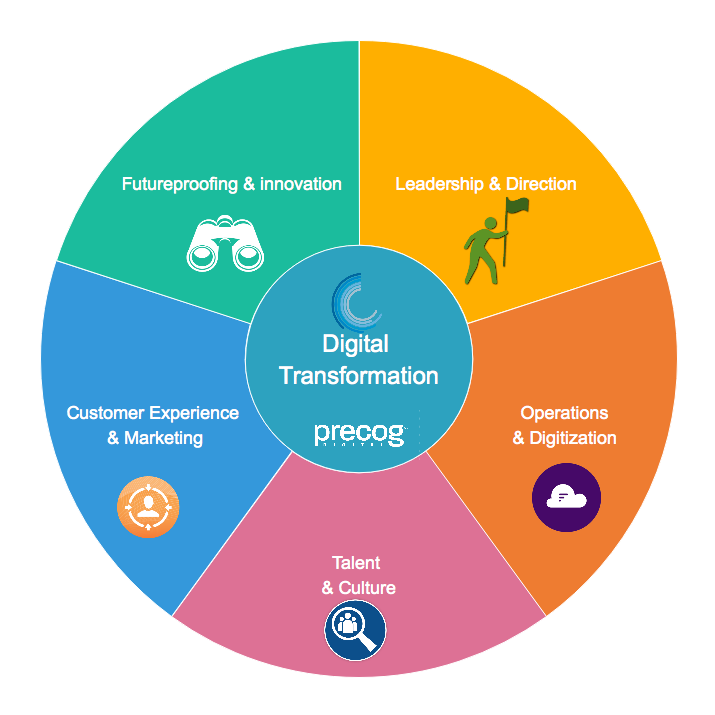

Jul 26, 2016 | Connecting with Customers, Culture & Leadership, Futureproofing & Disruption, Leading Winning Business, Technology & New Media, WHAT'S NEW
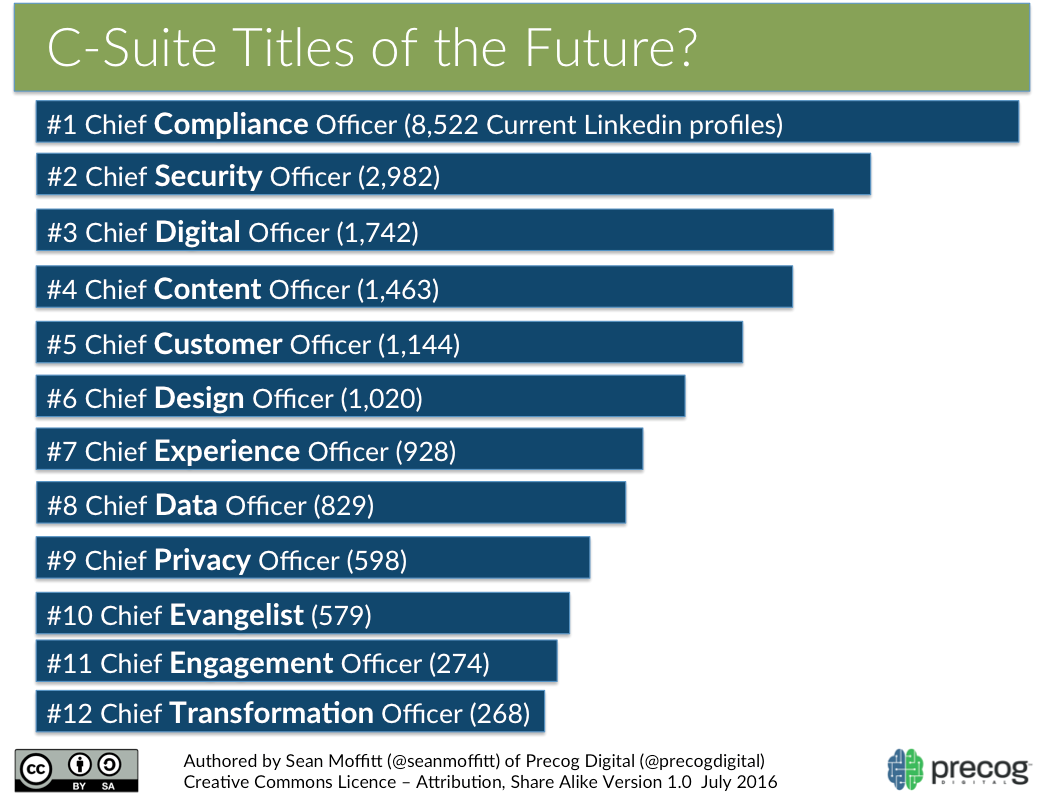
Ask any CEO and they will tell you that leading a business is more difficult than it has ever been with more people and topics vying for your attention. A number of relatively new tribes of professionals are asking for their fair share of resources and management credibility, who shall wear the next C-suite crown?
Get past the top 7 (CEO – chief executive officer, COO – chief operating officer, CMO – chief marketing officer, CFO – chief finance officer, CHRO – chief human resources officer, CTO/CIO – chief technology/information officer and CSO – chief sales/business development officer – sorry Chief Strategy Officer and Chief Investment Officer, you just missed the list) and the now the question is – “will a changing business landscape and disruption create opportunity for more executive level roles?”
Attached (above) are 12 roles that may be candidates for the crown. If you group them into clusters, they fall into 4 camps of executive level of talent:
Risk Security Focus – #1 Chief Compliance Officer, #2 Chief Security Officer (note: these two also overlapped with popular Chief Risk Officer) and #9 Chief Privacy Officer are focused on the legal, regulatory, privacy, security, risk management and disaster recovery demands and stewardship for the business in an increasingly complex age where threats might not be seen or forecast.
Customer Experience Focus – #5 Chief Customer Officer, #6 Chief Design Officer, #7 Chief Experience Officer, #10 Chief Evangelist and #11 Chief Engagement Officer underscore the need to get closer and understand customers at a strategic level.
Digital Focus – #3 Chief Digital Officer, #4 Chief Content Officer and #8 Chief Data Officer point to a need for business to get more sophisticated about technology at an executive level with the explosion of technologies, digital media and sources of information and data sources now available.
Business Change Focus – creeping in at the bottom of the list is #12 Chief Transformation Officer – suggesting that the imperatives for business are so great that they need to move beyond a specific function and instead be spearheaded by a centralizing focus.
So what do you think? Who will be next? Which will have the lasting power to stick around? Is there a better new way to the C-Suite than these 12, let me know.
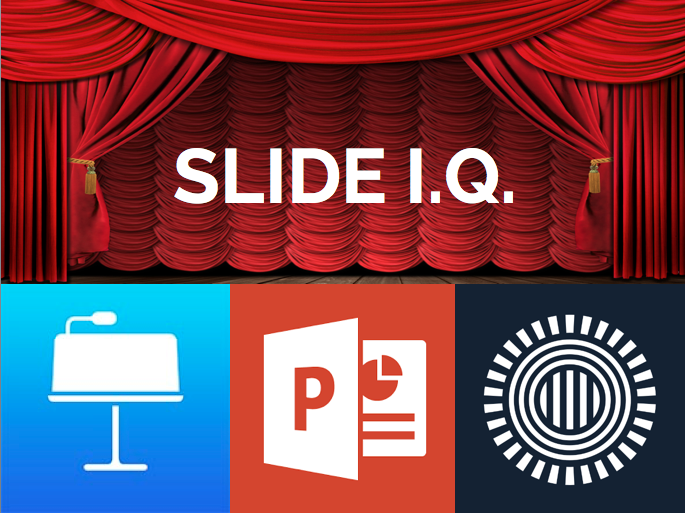
Jun 27, 2016 | Branded Content and Social Business, Culture & Leadership, Front Page, Hot Topics, Leading Winning Business, WHAT'S NEW
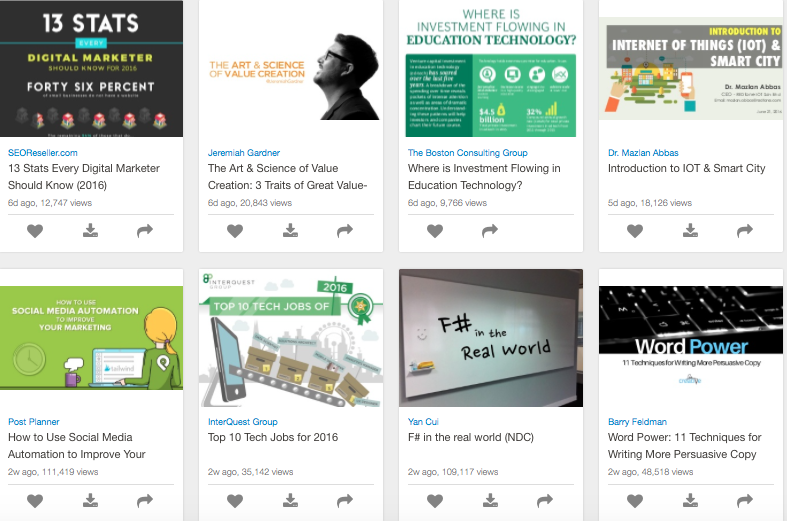
I’ve been thinking a lot about presentations lately. In the course of a year, i’ll have the opportunity to impact over 10,000 people in a live presentation arena and plenty more online. Like any craft, it’s my obligation to stay abreast of what works.
Two prevailing axioms that I have always found inescapable and I try to combine in my presentation work:
- Yes, it is a performance (the sizzle) – a presentation needs to entertain, take people on a ride, embed key messages within a narrative, treat people’s time as valuable and cater to the human need for sensorial stimulation in order for messages to sink in; too many corporate execs deny this reality or simply aren’t comfortable bringing the circus to town. Yawnnnn….
- It needs to have a goal that is helpful and has lasting value for the audience (the steak) – what’s the point if you’re not inspiring, educating or teaching your audience something relevant, new and practical; too many speakers on the professional circuit miss this mark in pursuit of the personal ego stroke, promotion of their own nirvana world views or worse, laziness in not customizing their content for their audiences. Remember the presentation is for them, not you.
So what else am I thinking about the art and science of “the prez”?:
- How is technology changing the idea of presentations?
- What formats make for the best presentations?
- Do audiences react differently to different presentations?
- If we are truly into “engagement”, are “people on stage” the best vehicles for that?
- How do I get to generate an even better reaction with my key stakeholders “the audience” before selfishly addressing my own objectives ?
Most of the dogmatic wisdom I hear about presentations comes from the professional presenter clique themselves. Make no mistake, they give good slide. I’ve provided examples of my five best presentation sources of inspiration below.
But what seems more annoyingly now more than ever, is the sameness of the well-coiffed school of slide-ology (and yes, that is a word). Conferences are spitting out highly-opinionated and rehearsed orators, they all are using the 60-90 slide, awesome background shots with one sentence prophetic statements, TED-like mantras (admission I do love TED but it’s not everybody’s thing) and “Look at me, look at me” delivery styles.
Is this what we want? Are other people seeing this trend toward style over substance? Quality of visual over thinking? Narcissism over selflessness? Noble-minded opinion over well-articulated theory put into practice?
So I searched for something that these presentation touring band hands would be wise to consider – evidence!
In looking at the last 30 most popular and recently popular presentations on Slideshare (I am making the presumption that a well viewed Slideshare presentation makes equally good live performance fodder). I found some interesting grains of truth. First of all, contrary to the speaker code, I noticed a large range of formats and styles amongst these viral slide hits (no dogs in the bunch – average views for these recently uploaded decks were 14k per day).
First, the quantitative stats on top presentations :
Number of slides: Average length – 57 slides, Range 16 to 147 – Verdict: no direct link to quantity of views/shares Conclusion – there is no rule of thumb for slide length
Number of words on slide: Average words/slides – 27 words, Range 2 to 153 – Verdict: no direct link to quantity of views/shares Conclusion – there is no rule of thumb for words on slide
Quality of Graphics: 8 presentations had truly great, likely professionally done slide work, 5 had good impactfully done slidework likely pulled together by the presenter themselves and 7 had very average looking slides (using available Powerpoint templated formats) – Verdict – although it helps and led to more social sharing, there is no standard floor for graphics in presentation impacting views or potential distribution Conclusion – spend less time developing great graphic and more time developing great ideas, provocations, arguments, evidence and results.
Number of Shares: the average amount of shared activities per presentation each day on the four relevant social networks (Facebook, Twitter, LinkedIn, Google+) was 11 per day with a range of 1 to 158 Verdict: the only key skews being towards more emotional presentations (+88% shares vs. average) and higher quality of slide graphics (+49% shares vs. average) Conclusion: no golden rule for getting social sharing of your content, communicate humanly, clearly and desirably and you have a chance.
So if we can’t rely on these numerical rules, what did they all have qualitatively in common?
– A Central Idea – at the heart of what was being presented, there was a solid idea on what was being covered, even better communicated when in the title of the presentation.
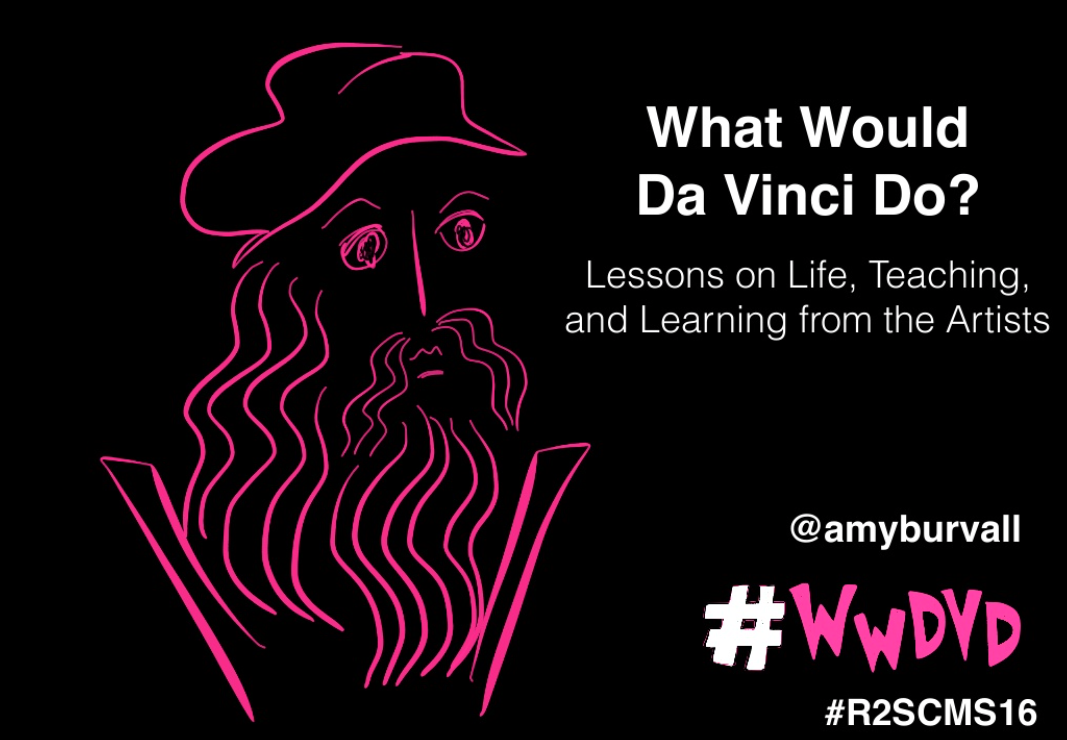
What would Davinci Do
– Visual Connectedness – although some presentations were average looking, all slides looked like they came from the same parent.
– Typography – if the fonts weren’t distinctive, they were all clear, bold and designed for impact.
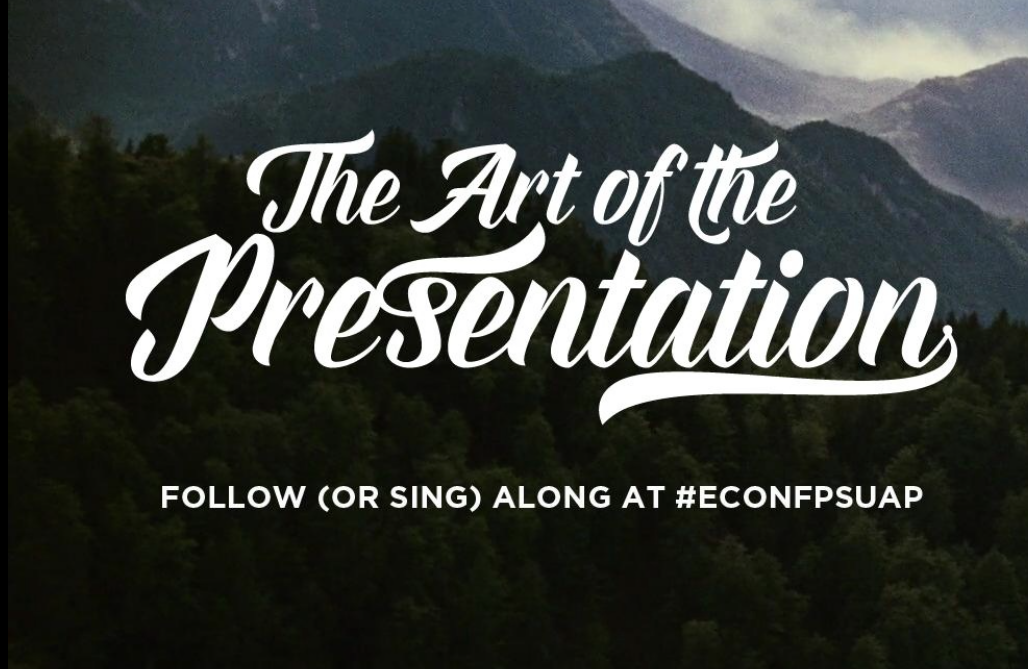
– Roadmap/Arc to their Presentations – the more effective roadmap provided, the more views presentation received – some did it through absolute slide consistency, others through a paradigm/model that guided their presentation and yet others did it through numbered lists.
– Recent/Topical Experience – although some dipped into history going back 50 years for context, most of the learning was very recent and up-to-date.
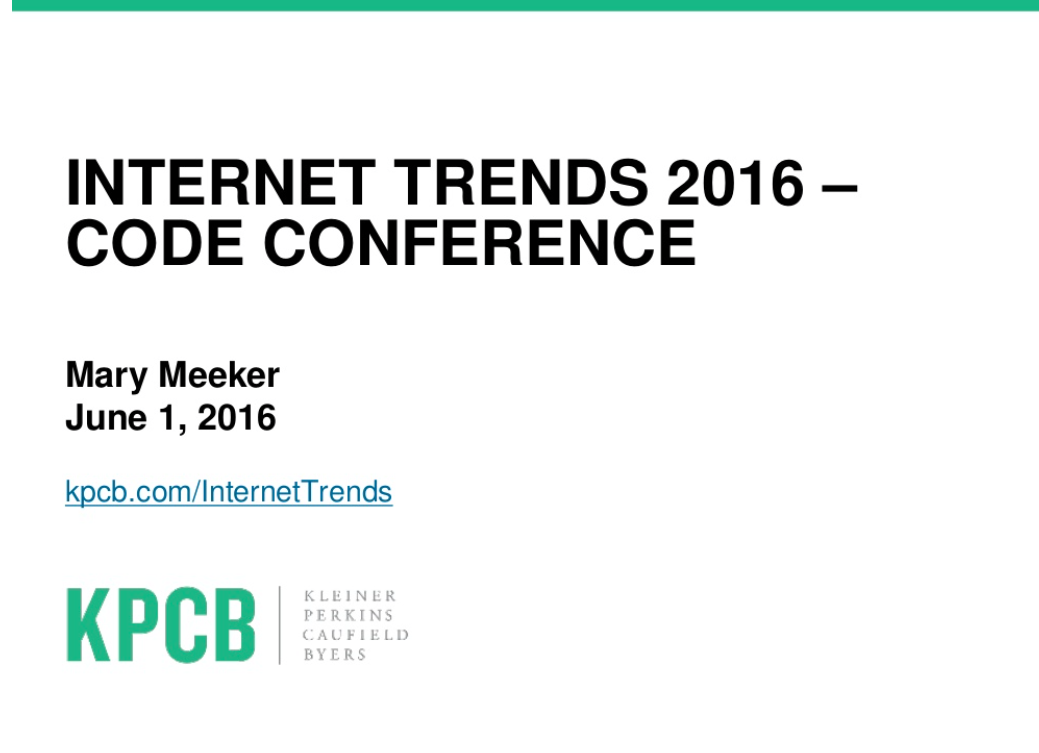
– Great Examples – in the majority of cases, the presenters had curated the best examples from their own experience or more likely the “world out there” to emphasize their points.
– Quotes – a reasonable use and justifiably placed, set of quotations from famous/smart people to emphasize the point being made was a frequently used tactic.
– Asking Questions – although not uniformly used, more than half of the decks openly asked questions, either to get people to think or to lead logically to the argument being posed.
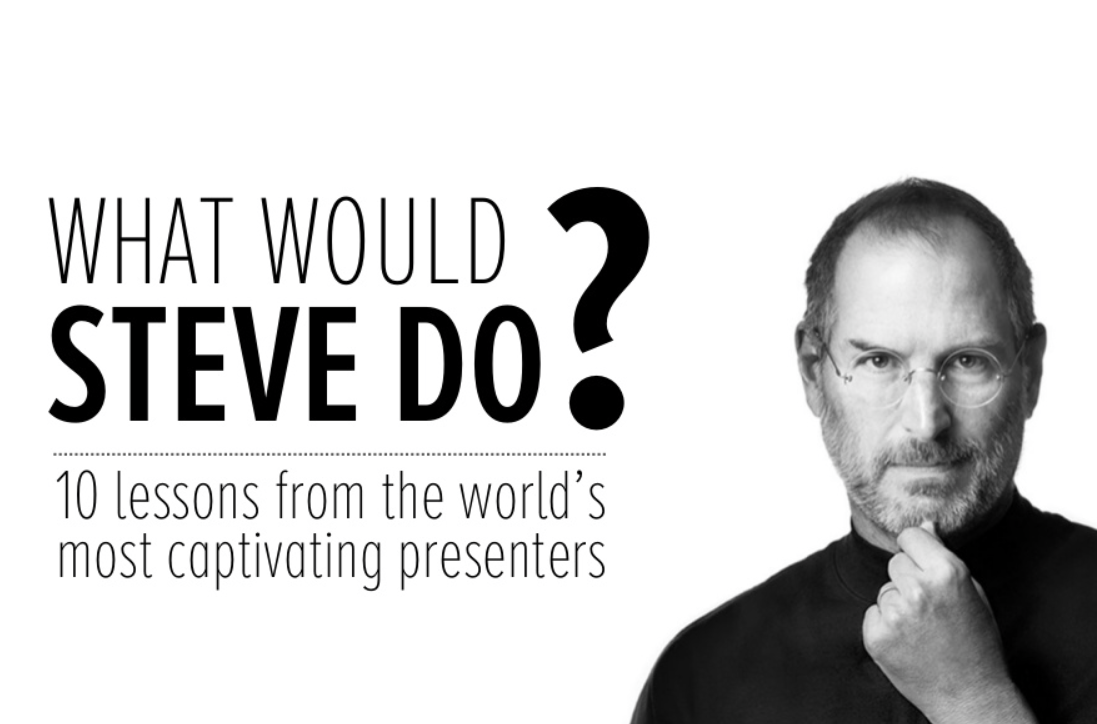
– Playful Tone – regardless of purpose of presentation (except for analysis presentations) – slide formats allowed for a bit of humour either explicitly in text or implicitly in pictures.
– Call to Action – many of the presentations had a clear call to action and what they wanted their audience to do and links to contact info.

So there you have it. Get the presentation police off your back and use whatever slide format you want by following these general guidelines. Curious to know your favourite presenter and/or presentation format?
Here are some of the best Presentation for Impact ongoing resources:
Presentation Zen http://www.presentationzen.com
Slideshare’s Blog http://blog.slideshare.net
Ethos 3 Blog http://www.ethos3.com/blog/
Make a Powerful Point http://makeapowerfulpoint.com
Duarte Blog http://blog.duarte.com
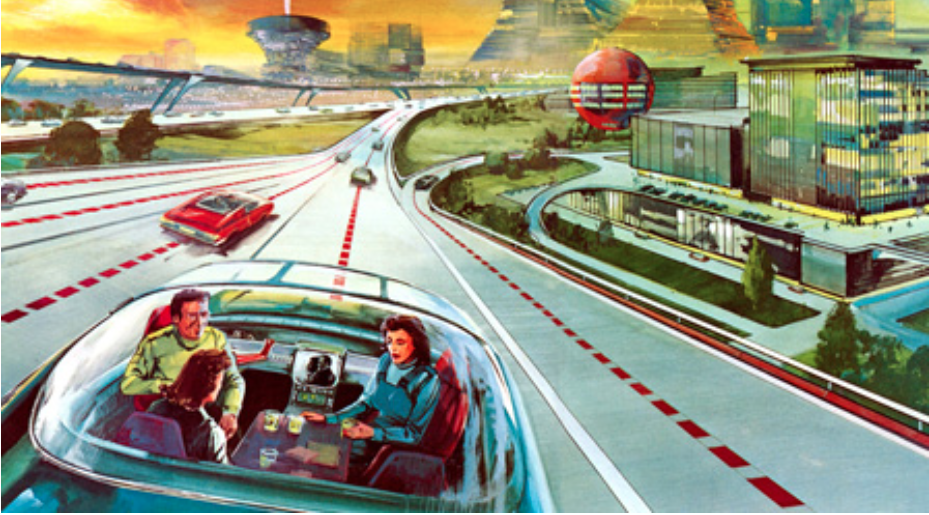
Jun 7, 2016 | Emerging Trends, Front Page, Futureproofing & Disruption, Hot Topics, New Business Models & Strategies, Product & Service Innovation, Social Innovation & Transforming Better Worlds, Technology & New Media, The Crowd, Sharing and On-Demand Economy, WHAT'S NEW

Here is the second instalment containing seven examples that point to a world that keeps getting quicker, faster and tougher to evaluate in the “Transportation” industry.
As we have seen over the last 30 years, massive disruption has hit the $4 trillion transportation industry. Detroit has shrunk into a tiny version of its former self. Air travel has continued to go through the constant boom and bust based on the economy and jet fuel prices, and has yet to collectively make a profit. The developing world can’t satiate themselves fast enough for the taste of car ownership while Western-World millennials would prefer none of it. And we all need to come to grips with increasing urban traffic congestion and its environmental effects the world over.
The difficulty in transportation is that when changes start to happen, they roll fast. And the lead times to catch up to that change can overwhelm companies, governments, societies and environments.
Here are the seven prime examples…whoosh:
Fast Forward #7 – Connected Automobiles (2012-2020)
By 2020, we will have 11X more connected automobiles being produced each.year than just 8 years ago, making them the majority of cars produced by 2020. Since the 1908 introduction of the Ford Model T, we have now entered the fourth generation of cars – beyond: merely available; easy to use; comfortable, safety and feature-driven; to now being mobility connected. We want our cars to be extensions of our smartphones, secure environments, entertainment streams and personalized feedback mechanisms. The revolution may be coming with a roster of anticipated and unforeseen benefits.
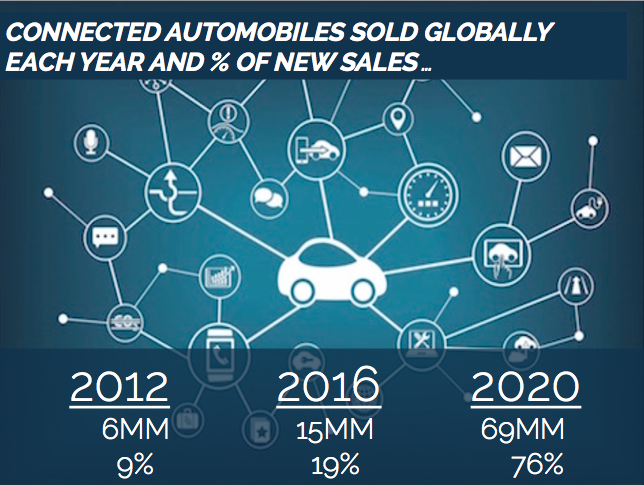
Fast Forward #8 – Autonomous/Self Driving Cars (2025-2040)
Uber was the first to jump in and introduce the first commercial autonomous (or self-driving”) car in Pittsburgh (of course they have to staff it for regulatory and legal reasons). The bigger news is that in less than a full generation, more than 65% of cars on the road will be self-driving. This will increase our amount of productive time (10 trillion minutes saved by 2040), and likely reduce our passion for gearing up on the “open road”. Think about the impacts on car design (see picture below for an IDEO concept vehicle of the future)? car ownership? on insurance? on traffic congestion? on light signals? and will truck drivers become the next secretaries, out of work due to technology shift?
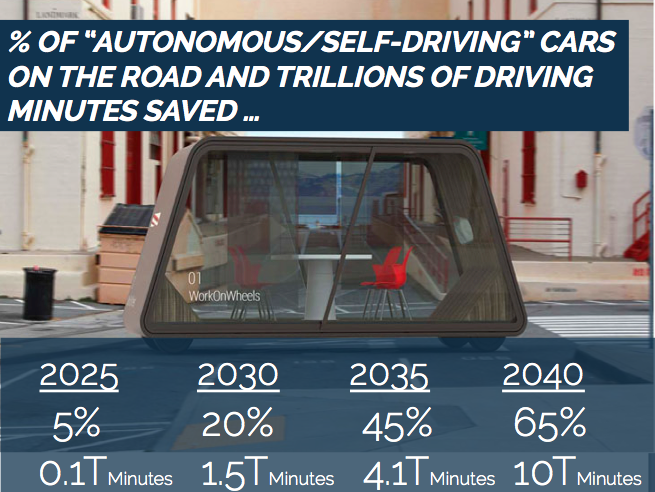
Fast Forward #9 – Global Car Sharing (2008-2018)
With the likes of CarGo, Zipcar, DriveNow and others, will the environmental, financial and lifestyle advantages of peer-to-peer car sharing make the idea of car ownership a thing of the past? Evidence – we will have 40X more car sharers in the world over the course of merely one decade by 2018
.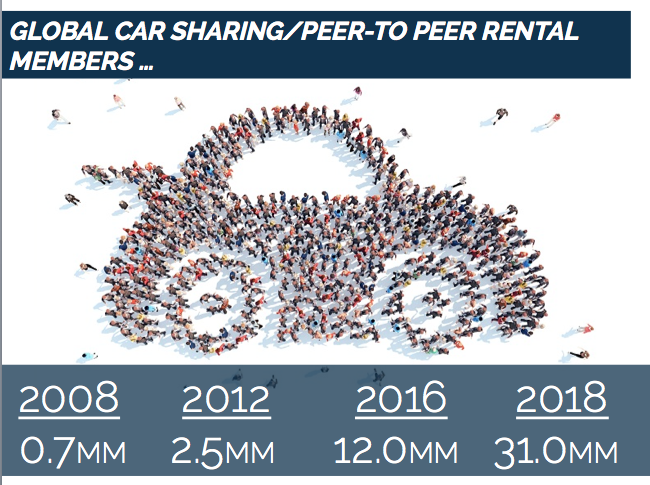
Fast Forward #10 – Electric Cars Produced Globally (2010-2040)
Perhaps this documentary was premature? Maybe we all are ready to give up the catalytic converter? Even though we have frenzied lineups for Tesla’s new electric versions, imagine a 3o year period where we’ll see a 70x jump in electric cars being produced annually and the infrastructure to support it (battery life, charging stations, electricity demand and standards) to support it.
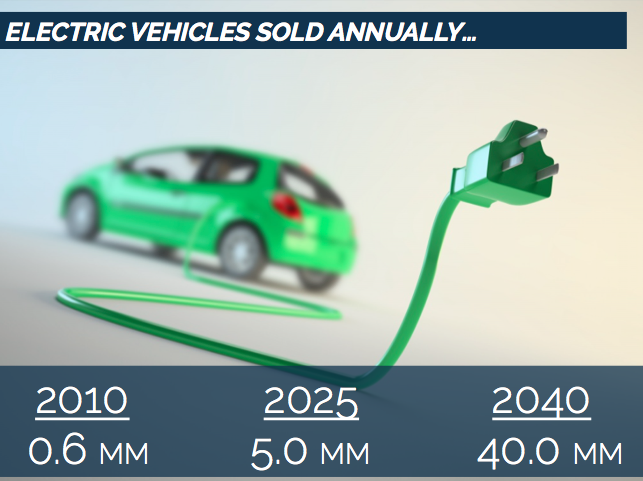
Fast Forward #11 – Global Bicycles Produced (1975-2015)
We have seen a tripling of bikes produced globally over a 40 year period. Driven by cheaper economics of bike production, increased paving, urban incentives and lifestyle preferences, it may be true H.G. Wells quote “every time I see an adult on a bicycle I no longer despair for the future of the human race”. But disturbingly, even though we can now own bikes, will we want to ride them? Even though most trips are within 5km, only 0.9% of all US trips are currently made by bike. Self-propelled, two-wheel fans and advocates, don’t despair – here are 10 countries to emulate.
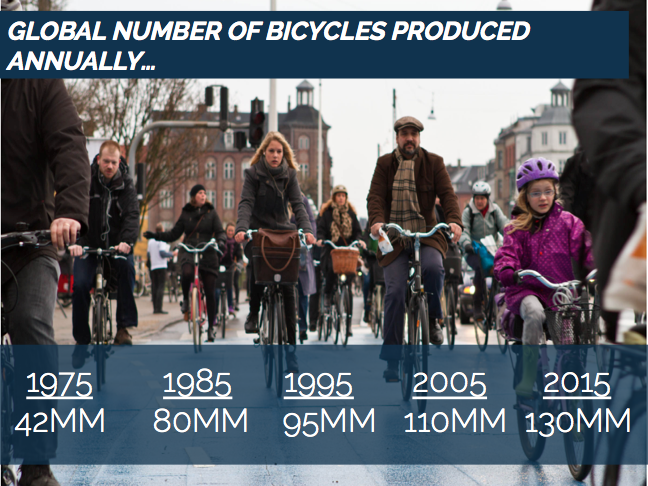
Fast Forward #12 – Cost To Push Payload Into Space (2010-2020)
For the greater part of 50 years, it has cost the same amount of money to push tonnage into space, usually exhausting tonnes of highly propulsive gas and non-reusable rockets. Given the push for Mars, need for economical satellite activity and privatized competition in the “space race”, we may be seeing space payloads that will be 10X cheaper to push into space soon and a return to mainstream excitement about space travel.
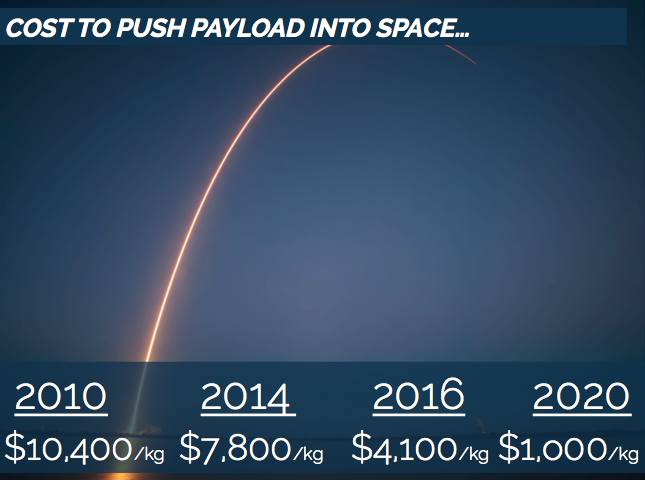
Fast Forward #13 – The Drone Industry (2014-2020)
Although Amazon Prime Air, Walmart and others have been rejected for commercialized delivery of mail and package delivery through drones, it may not be a distant pipe dream. Drones are being accepted as the next new holiday toy, but also increasingly for commercial uses. We anticipate 14X growth in annual shipments over a very short 6 year period.
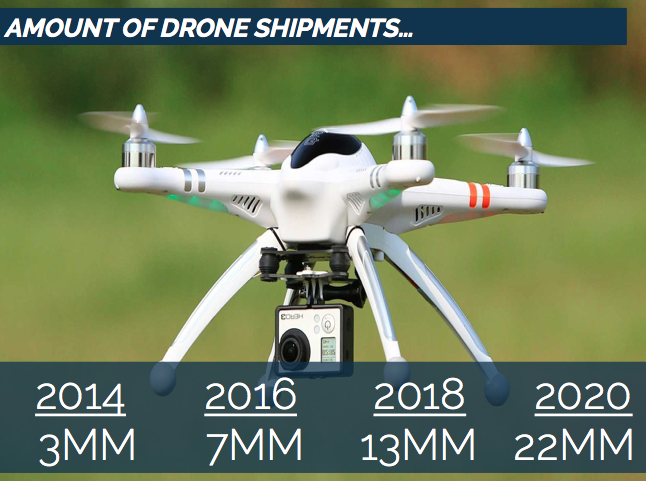
Follow or link to me for more Fast Forward Updates here soon, on my website SeanMoffitt.com and a new eponymous venture launching soon.























